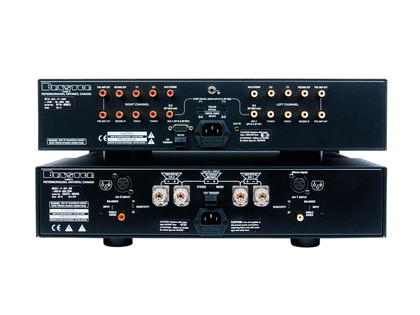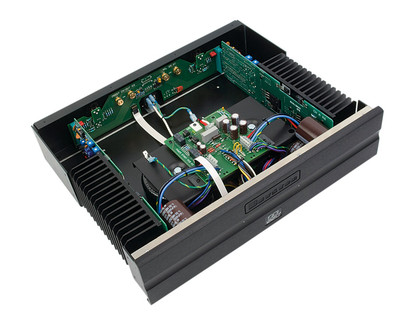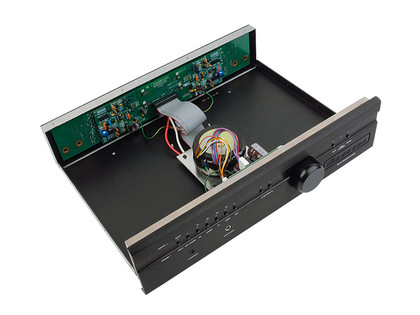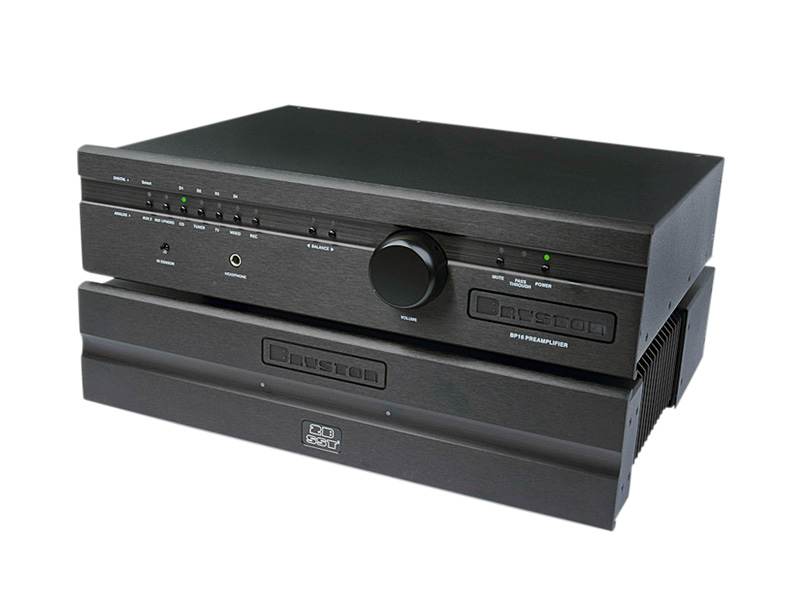TechRadar Verdict
Bryston consistently builds very high-quality amplifiers and the SST2 upgrades bring real sonic gains. The power amp is marginally the better of the pairing, but the real magic happens when the two work in unison
Pros
- +
These amps offer superb build quality
- +
Highly resolute sound quality
- +
A plethora of line inputs
- +
Upgradeable preamp
- +
20 year warranty
Cons
- -
Remote handset is still silly expensive
- -
No balanced outputs on preamp
- -
Not the most stylish of components
Why you can trust TechRadar
When we tested the Bryston 28B SST2 power amplifier last year, we were blown away by its effortless power and incredible resolution. The only problem with the 28B SST2 is that it's the company's most ambitious power amp to date and as a consequence, it's very expensive.
Fortunately, however, the SST2 technology developed for the 28B has now been trickled down into the rest of Bryston's power amp range. This means that our test subject power amp, the 2B SST2, has much of its bigger brother's sophistication, without the prohibitive expense.
Partnering it is a newcomer to the preamplifier range, the BP16, which has the option of an on-board DAC or MM phono stage. The BP16 is one of two relatively new preamps to the Bryston range, sitting midway between the entry-level BP6 and the top-dog BP26.
It shares the same casework as Bryston's B100 integrated and has the same preamp section. Despite its no-nonsense appearance it uses software control to provide extra features, but keeps the signal within fully discrete, analogue class A circuitry. But being based on an integrated, it doesn't have a balanced preamp output to match the input on all Bryston power amps, which seems odd.
In standard trim, the preamp has six line inputs and a tape loop (effectively seven inputs), plus there is the option of adding four digital inputs to make it a BP16DA, and also an MM-only phono stage (BP16P). Those with moving coil cartridges will have to add the external BP-1.5 phono stage and MPS-2 power supply, however.

INPUTS: You can choose to add four optical inputs to the BP-16, effectively making this a BP-16DA
Other features include a full-size headphone socket, balance control, mute and a 12-volt trigger. It's an extremely flexible preamp with a very substantial remote handset, although this costs an unpalatable £350.
In fact the duo itself isn't on the cheap side, but there is one market-leading factor built into the pricing and that's Bryston's legendary nukeproof build and outstanding 20-year warranty and for that it deserves commendation.
The 2B SST2 is the latest incarnation of Bryston's entry-level stereo power amplifier, a model that has been around since Margaret Thatcher first took office, but now offers twice its original power output at 100 watts into eight ohms. This figure increases to 180 watts into four ohms and there is also the option of bridging the 2B SST2 to turn it into a 320-watt monoblock!

UPDATED DESIGN: Hard to believe this model has been kicking around since the days of Thatcher, albeit in a slightly less powerful form

NEW KID ON THE BLOCK: This pre-amp sits right in the middle of the Bryston range
Changes to the 2B brought about by SST2 technology include a new soft-start power switch, an RF filter on the input and higher input impedance. Noise and THD have been lowered, too and capacitors in the input and feedback loop have been upgraded.
Unlike the BP16, the 2B SST2 has balanced as well as single-ended inputs the sensitivity of which can be changed between one and two volts – the standard one-volt setting offering six decibels of extra gain. The one volt setting is considered standard, but the two-volt option is said to offer lower noise and thus sound better, but it does require more gain from the preamp.
Sound quality
Arriving at the Bryston amps after our considerably more expensive reference classé pre/power combo, we were struck by two things. Firstly, the combination's slightly 'pro audio' sound and secondly, how remarkably powerful the 2B SST2 is given that it's the base model in the range.
Our Bowers and Wilkins 802Ds presented no load problems to the Brystons but did, perhaps, highlight our 'pro audio' findings: by high-end standards, there is a slight shortfall in absolute refinement, but this has to be tempered by the fact that the price is not high-end in the full sense.
The amps are extremely revealing and assured for the asking price and the longer we listened, the better they got. Interestingly, however, all of the relevant subjective comparisons we made with well-regarded and with more affordable amplifiers went distinctly in favour of the Canadian pairing, which speaks volumes for the design.
The amps are extremely good at revealing the depth of a note. The full harmonic structure of each instrument or voice is presented in a highly natural and convincing manner. So high bells have remarkable depth of tone and if some reverb has been added to the mix then the sound has even more body.
The Brystons even go as far as making more affordable amps seem thin at high frequencies, suggesting that the company's claims about attention being paid in this area has wrought useful returns. While not quite as open as the best in class, the amps are extremely revealing through the midband, producing entirely convincing imaging with genuine solidity of stereo.
There is a delicacy to instruments that is unusual: quietly struck cymbals and piano have a degree of nuance that is rare, we were particularly enthralled by this aspect of the Avishai Cohen Trio's performance.
We were also particularly impressed by the grip that you get in the bottom end. This allows Cohen's double-bass to stand out from the band and feel like it's in the room, an effect that's further exaggerated especially if you turn the wick up. The combination of delicacy, bass prowess and transparency through the midband combined with the great timing it delivers really is the icing on a very special cake.
Taking the timing ability a step further, we assessed the amps by putting together a system stacked with kit that times particularly well. This included the Leema Acoustics Tucana integrated amplifier and the Guru QM10 loudspeakers at the sharp end. Slotting in the Brystons just gave us more of what we were already hearing - on-the-money timing plus depth of tone.
Taking the BP16 on its own, we tried the variable output of Resolution Audio's opus 21 CD player to remove the preamp from the system, to see how it changes things when used. The result gives bigger voices, a little more space, slight veiling but similar dynamics. All components add some character in this situation and the BP16 did well to intrude so subtly given the flexibility that it brings to the party.
Using the 2B SST2 with an impressive MSB Technology transport and DAC which has its own volume control, reveals that it's a propulsive powerhouse that can deliver a degree of realism that is positively electric with a serious source. It's the sort of combination that makes you want to dispense with preamplifiers altogether and live on the single-source edge. Certainly this is a simpler and sometimes cheaper option if done correctly.
The Bryston BP16 and 2B SST2 make a convincing pairing and deliver a sound that is subtle, yet revealing. At the same time they offer real driving power and excel in the bass and there's not a lot more you can ask of an amplifier at this price.
Follow TechRadar reviews on Twitter: http://twitter.com/techradarreview
